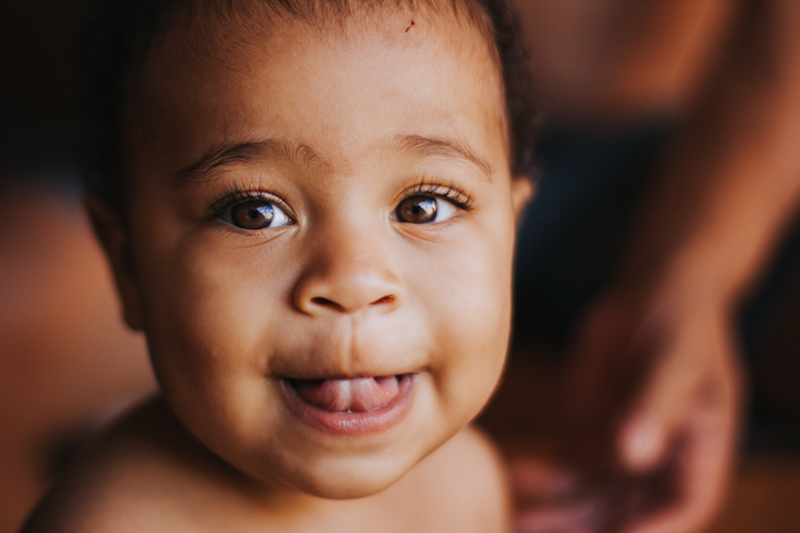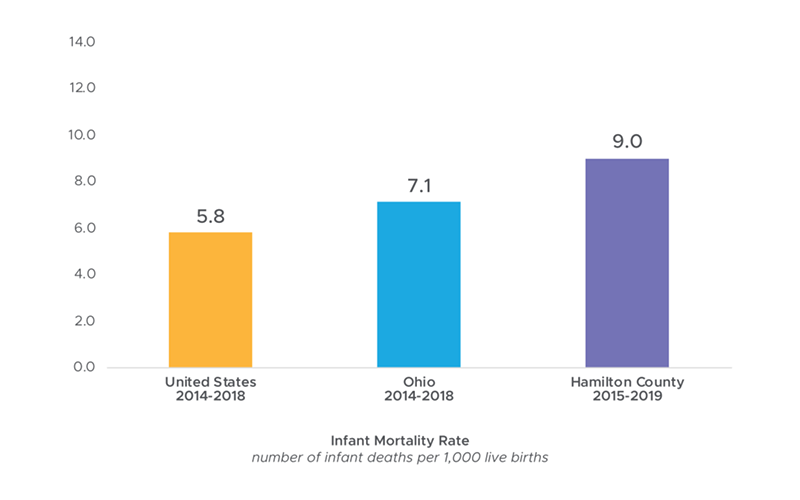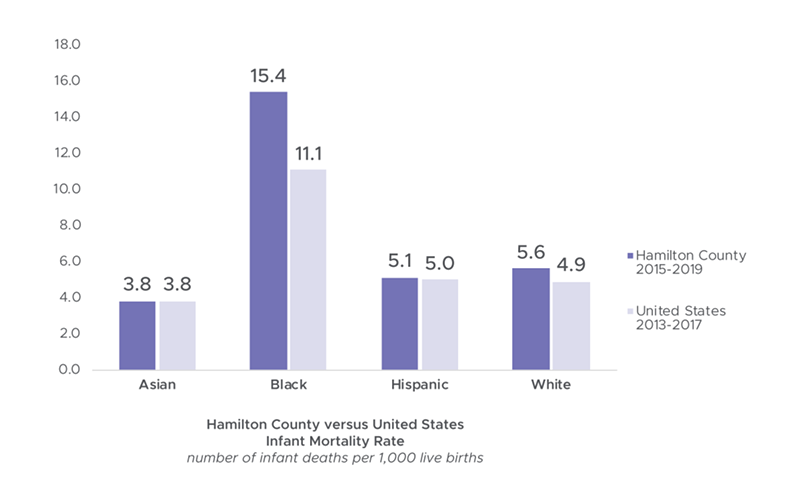According to Cradle Cincinnati — a nonprofit committed to bringing parents, caregivers, health care professionals and community members together to reduce infant mortality in Hamilton County — last year, 96 babies in the county died before they turned 1 year old.
That was three more than in 2018, when the county reached an all-time low, says the organization.
Hamilton County in general has one of the worst infant mortality rates in the country — it is in the bottom 10%. But while there were 9.1 deaths per 1,000 live births in 2019, the mortality rate among Black infants improved: In 2019, there were 24% fewer deaths than in the previous five years, says Cradle Cincinnati.
They say this is both due to the community and its partners focusing on improving racial disparities in birth outcomes and a decrease in the amount of Black babies born before 23 weeks of gestation.
“A growing movement of Black women is leading this change,” said Dr. Meredith Shockley-Smith, director of community strategies for Cradle Cincinnati. “Many are maternal health professionals, but many are moms, aunts, grandmothers and neighbors who are banding together to change this story. For years, Black families, regardless of income, have been disproportionately impacted by infant mortality. Now those same families are building solutions that are working better than solutions that were built without them.”
But, Cradle Cincinnati says, Black families are still twice as likely to lose a child compared to white families in Hamilton County.
“For more than 50 years, Black infant mortality has occurred at two to three times the rate of other populations. We cannot shift focus or declare victory just because the Black infant mortality rate was lower than ever before. We need to press on until outcomes are truly equitable,” said Dr. Elizabeth Kelly, maternal health lead for Cradle Cincinnati.
Non-Hispanic White, Hispanic and non-Hispanic Asian also saw non-statistically significant upticks in infant mortality in 2019.
According to Cradle Cincinnati's data, there are three reasons why death rates fell among Black babies in 2019: the steep decrease in the rate of preterm birth (or birth before the mother's second trimester); an improvement in preterm birth in the communities of Price Hill, Avondale and Villages at Roll Hill; and "a community of partners, led by Black women, has rallied around improving disparity."
Cradle Cincinnati is expanding its efforts to tackle preterm birth rates in 12 additional neighborhoods, working with with community leaders and social service partners. They did not list where those 12 neighborhoods are.
The nonprofit is also encouraging Black women to join Queens Village, a self-described supportive community of powerful women looking to relax, recharge and take care of themselves and each other.
The women in Queens Village provide a safe space and support for Black mothers "to connect, to relieve stress, to process trauma and to build a better world together for ourselves and our children."
Cradle Cincinnati’s vision is that every child born in Hamilton County will reach his or her first birthday. We will not...
Posted by Cradle Cincinnati on Thursday, June 25, 2020




